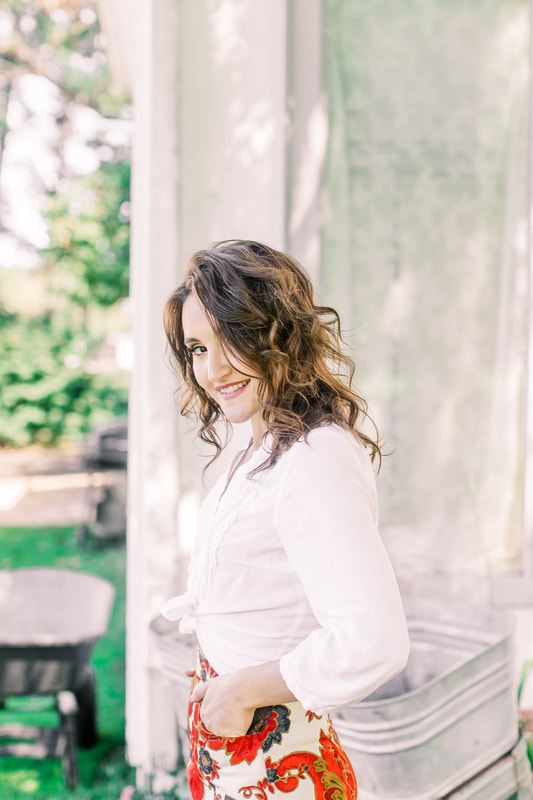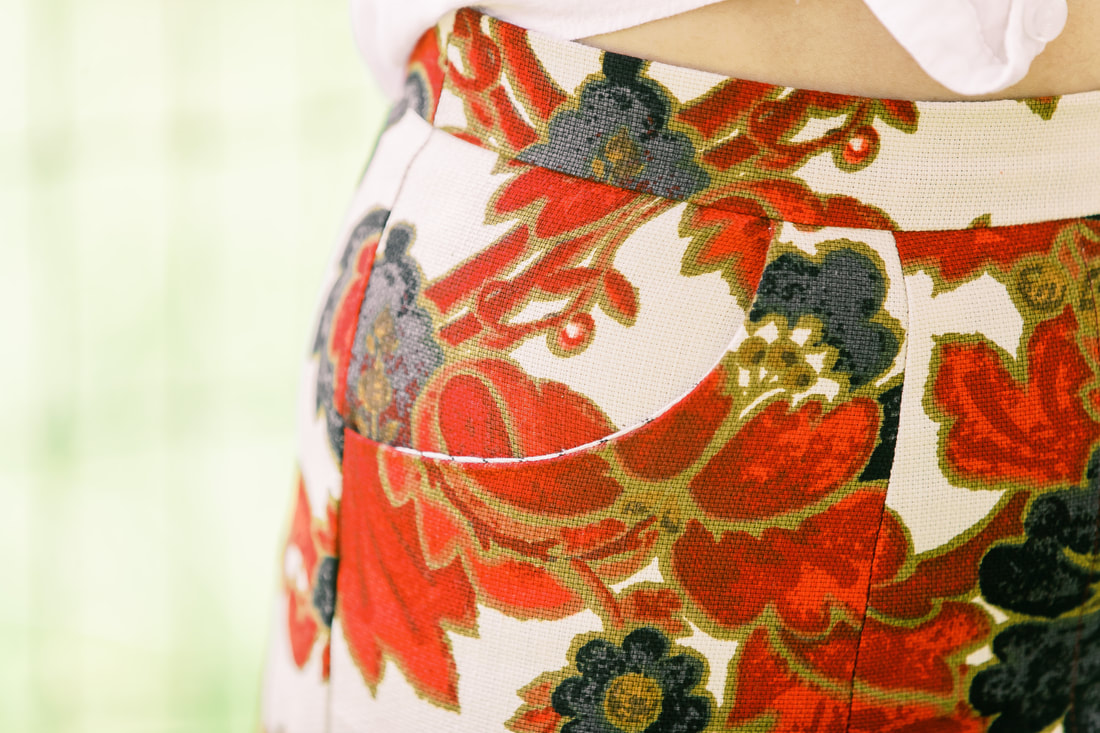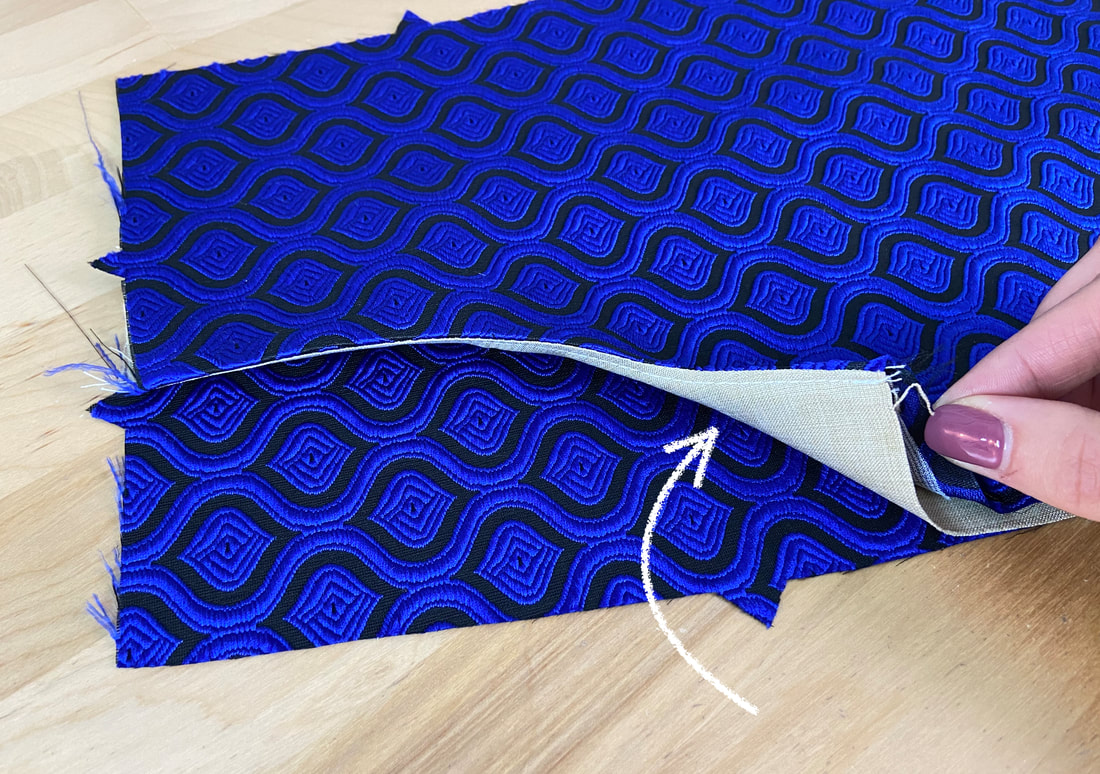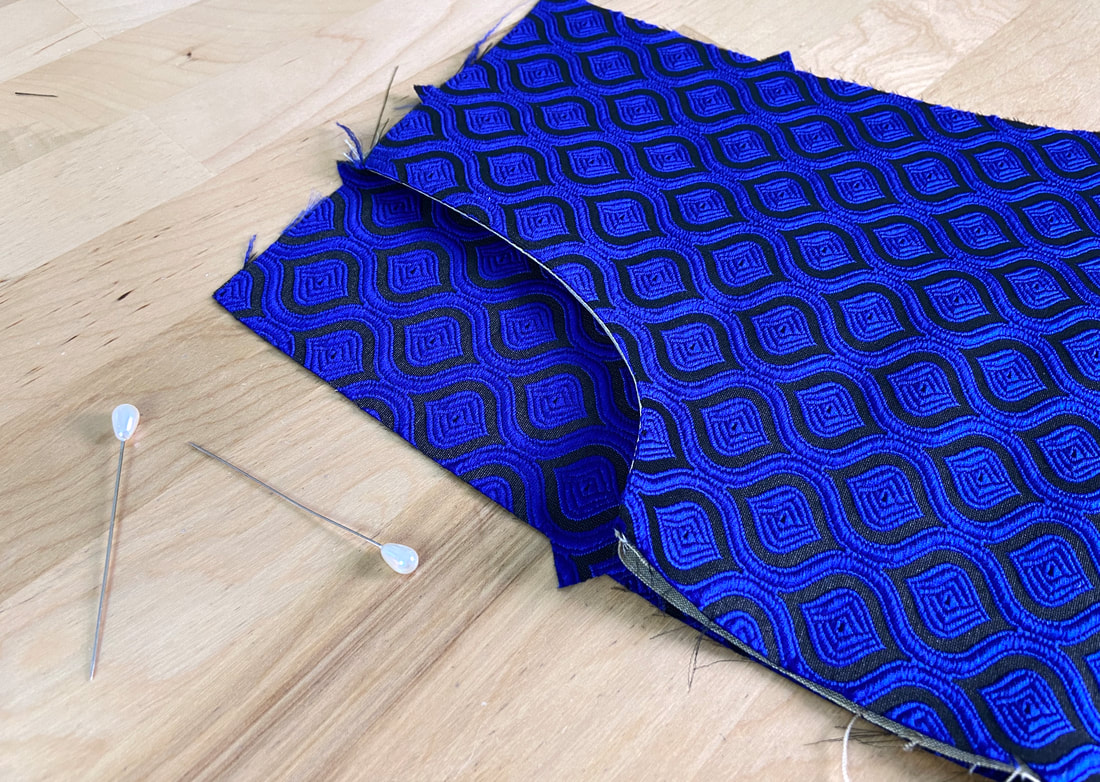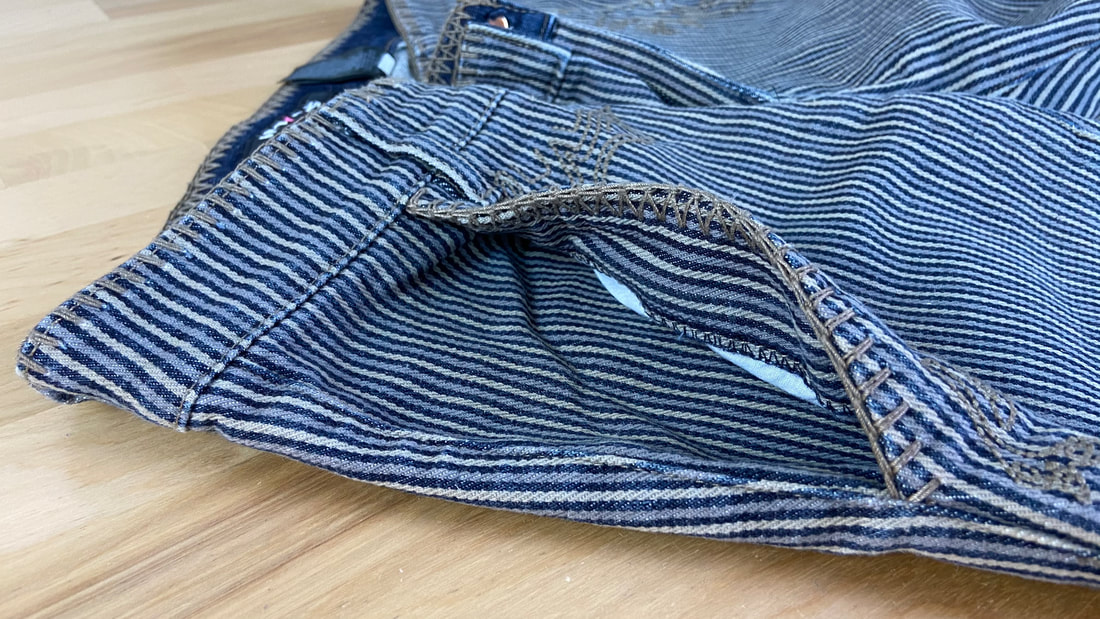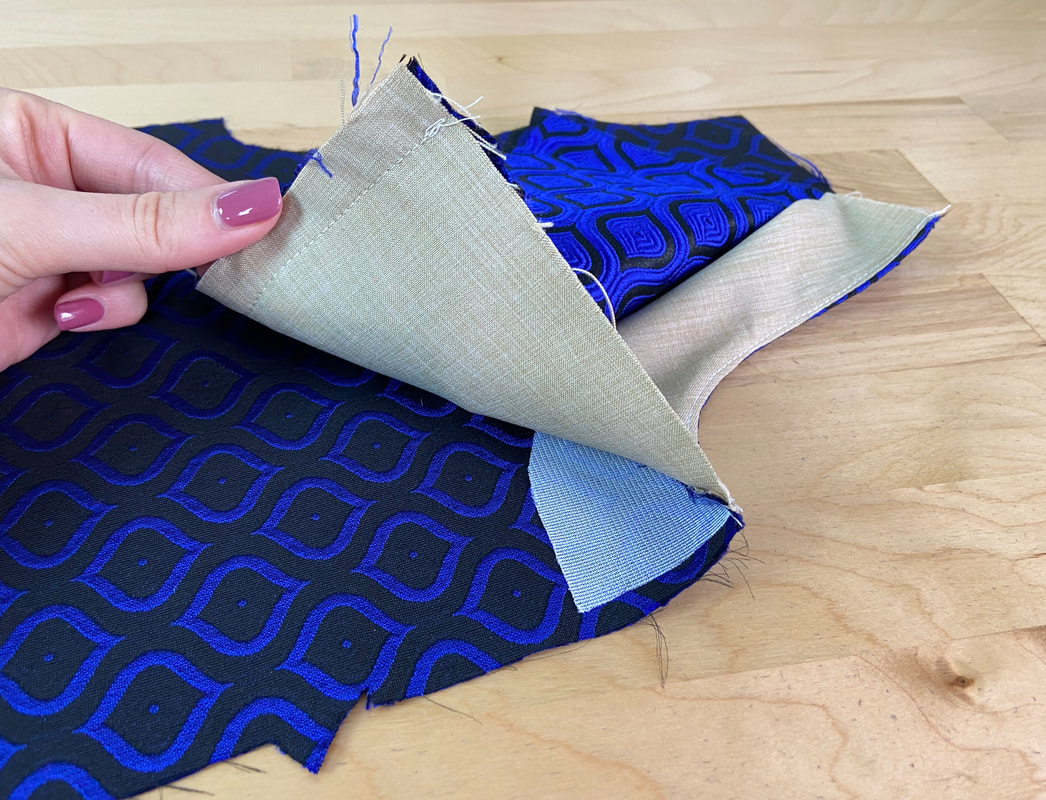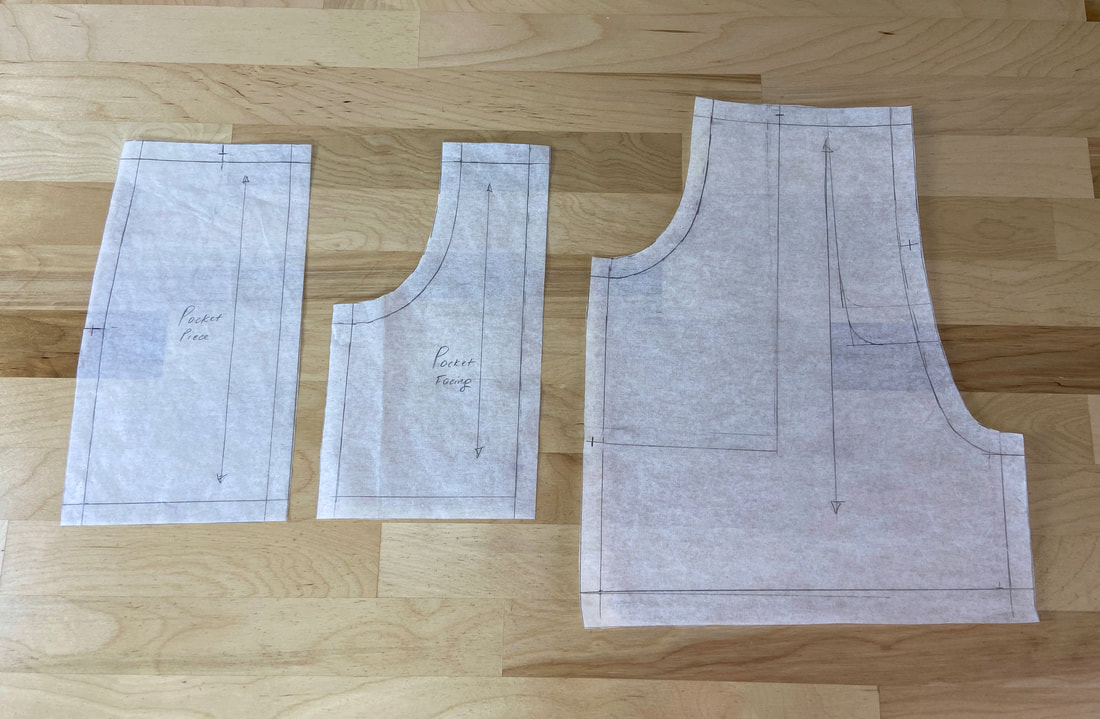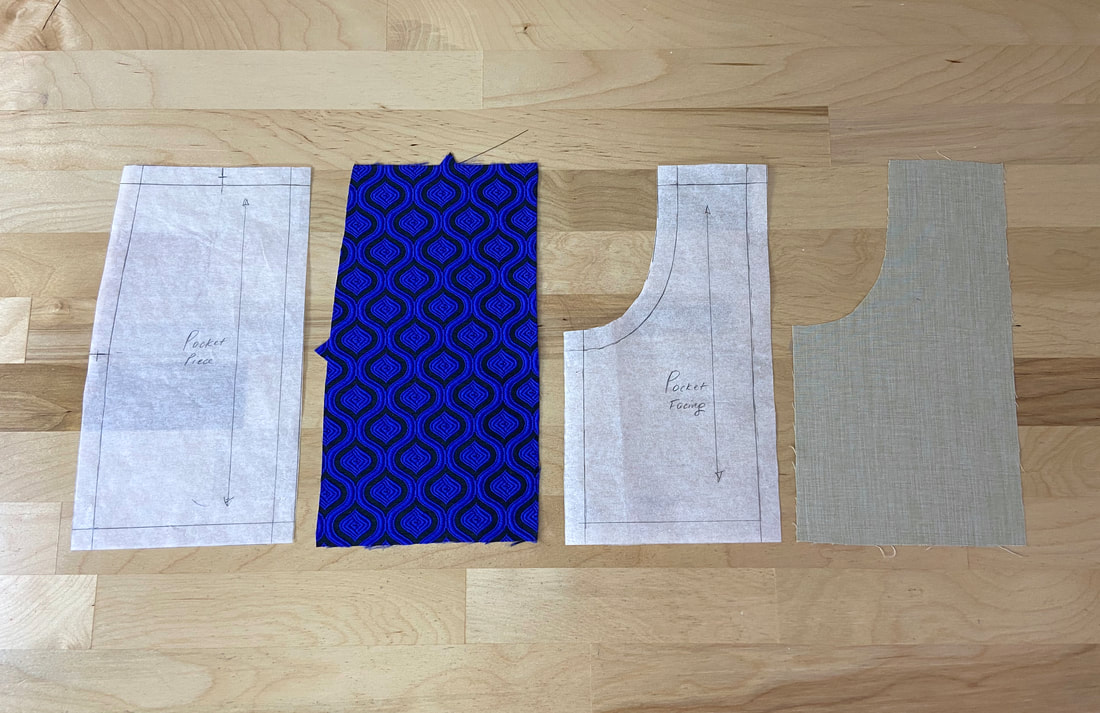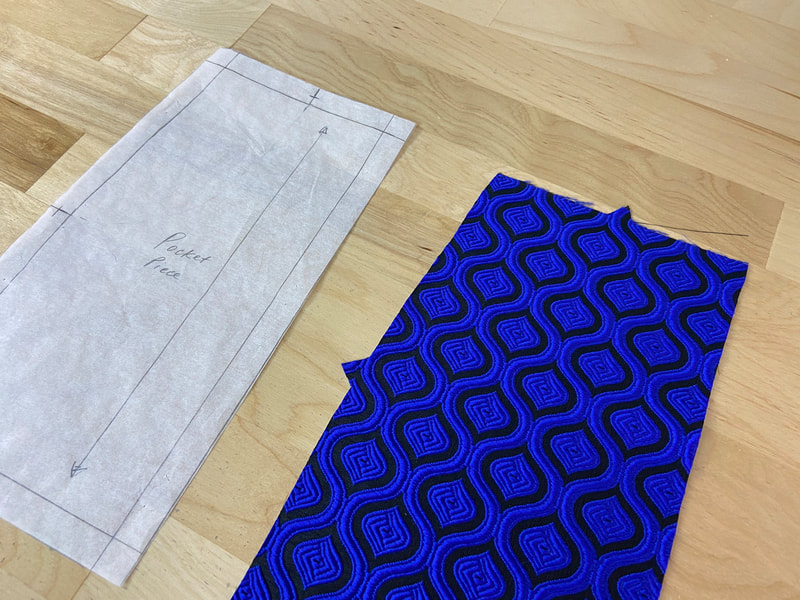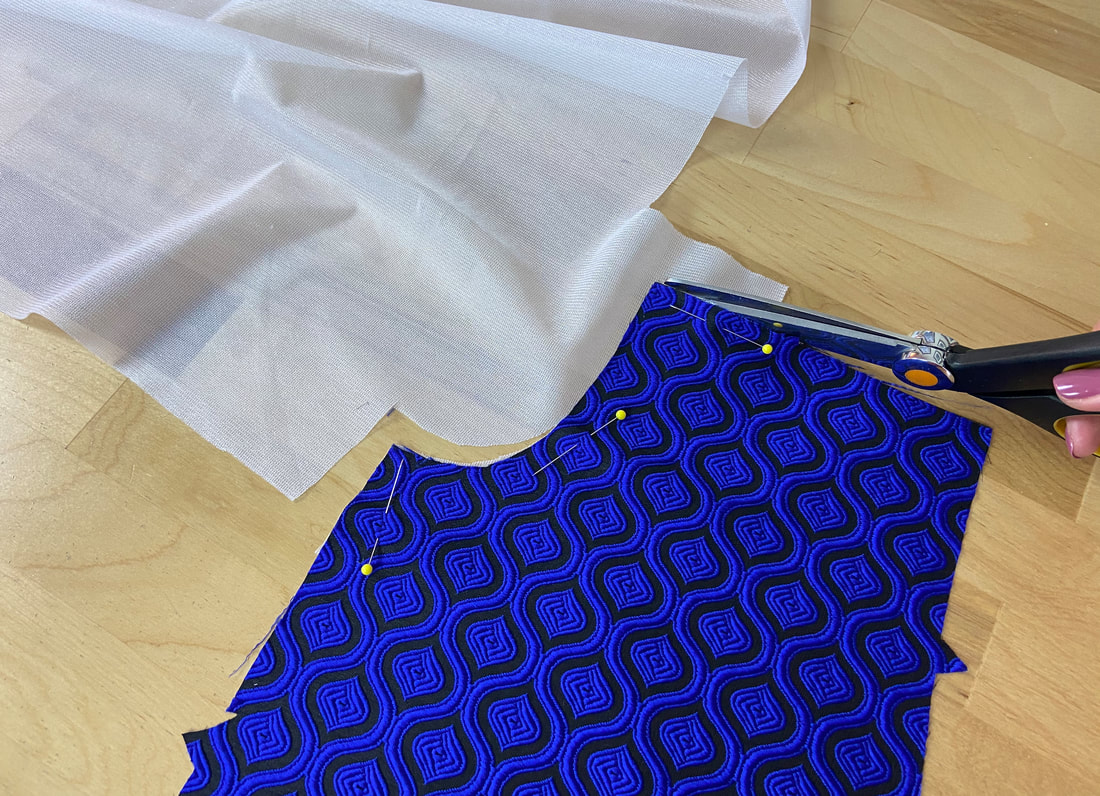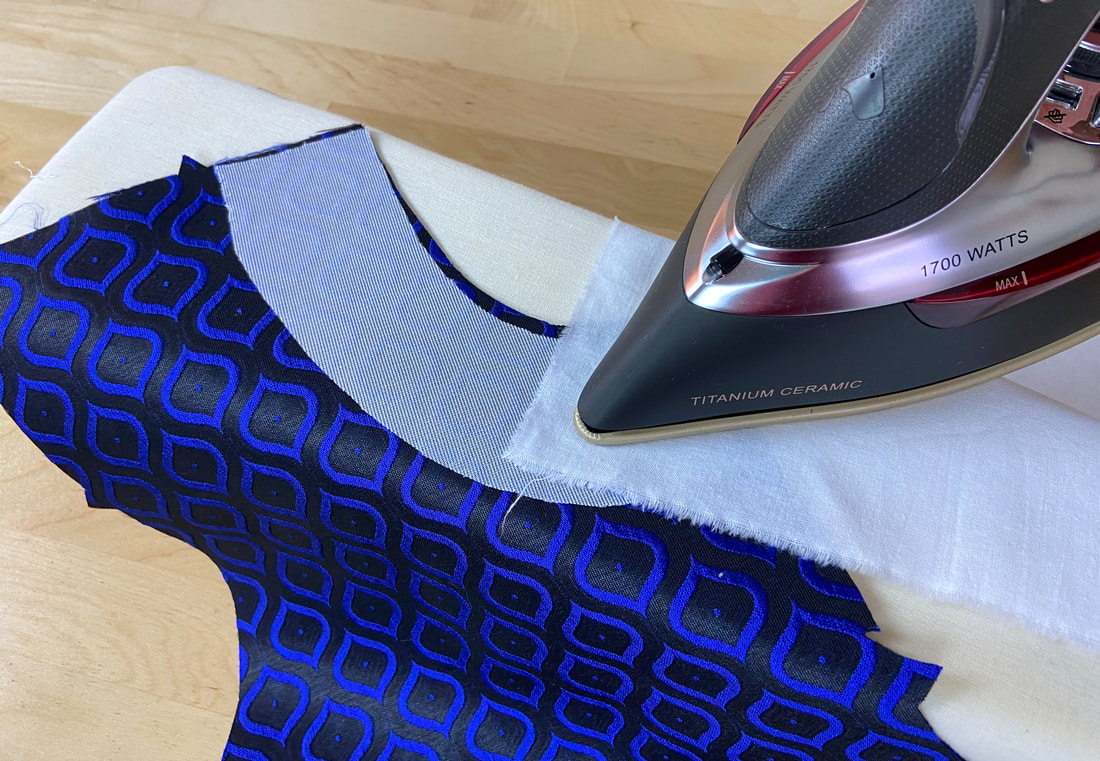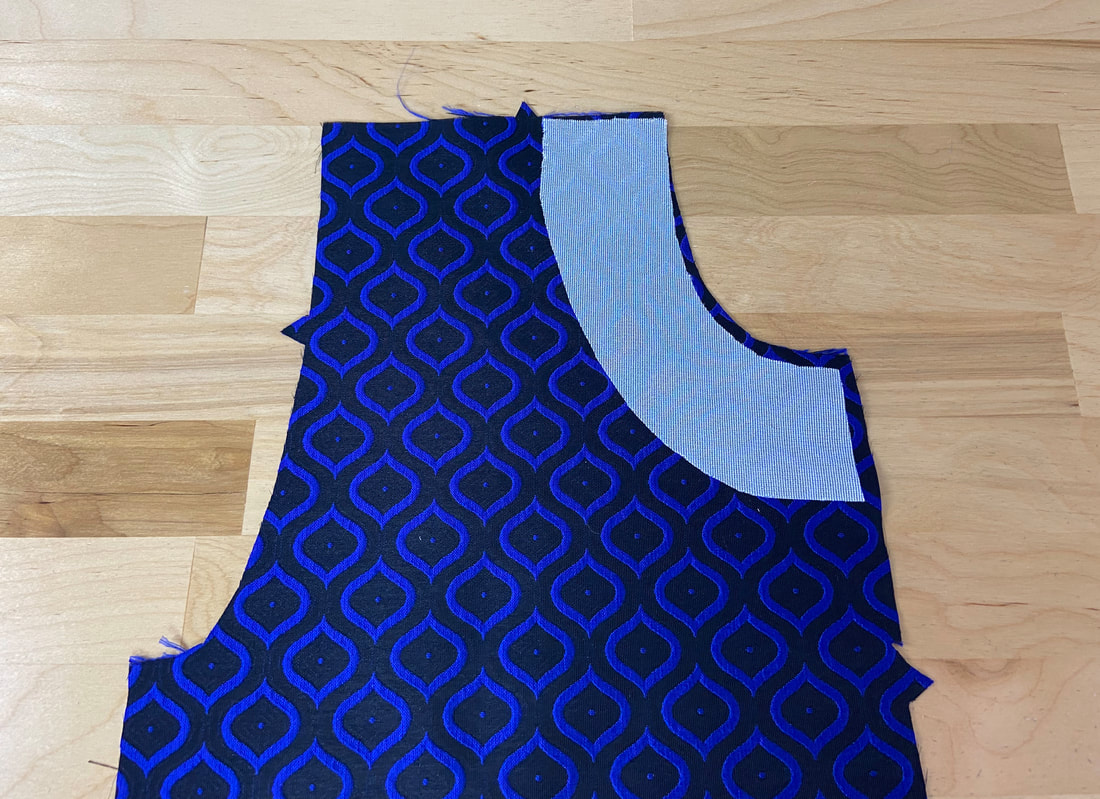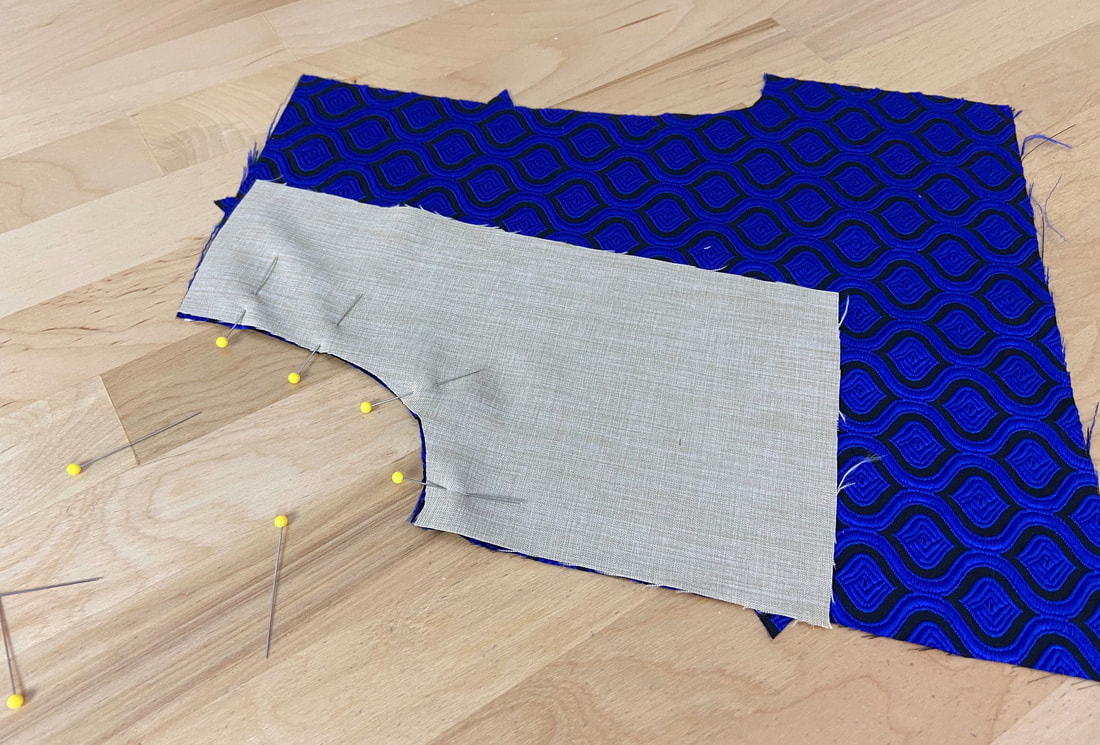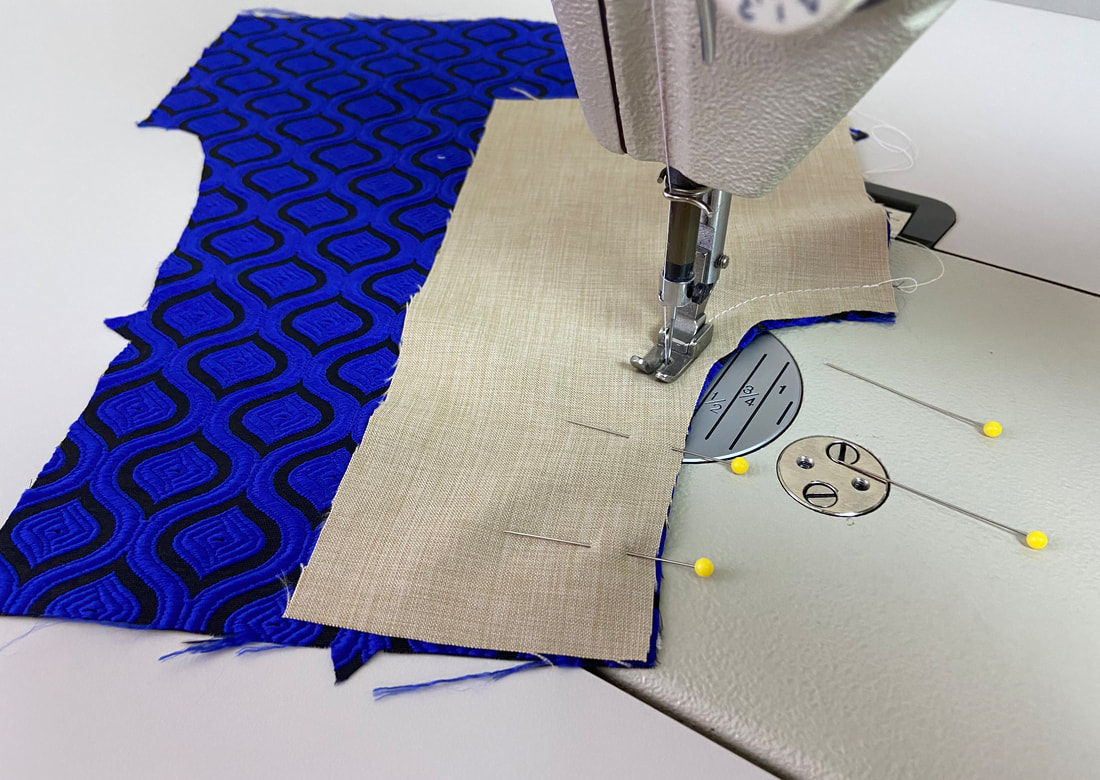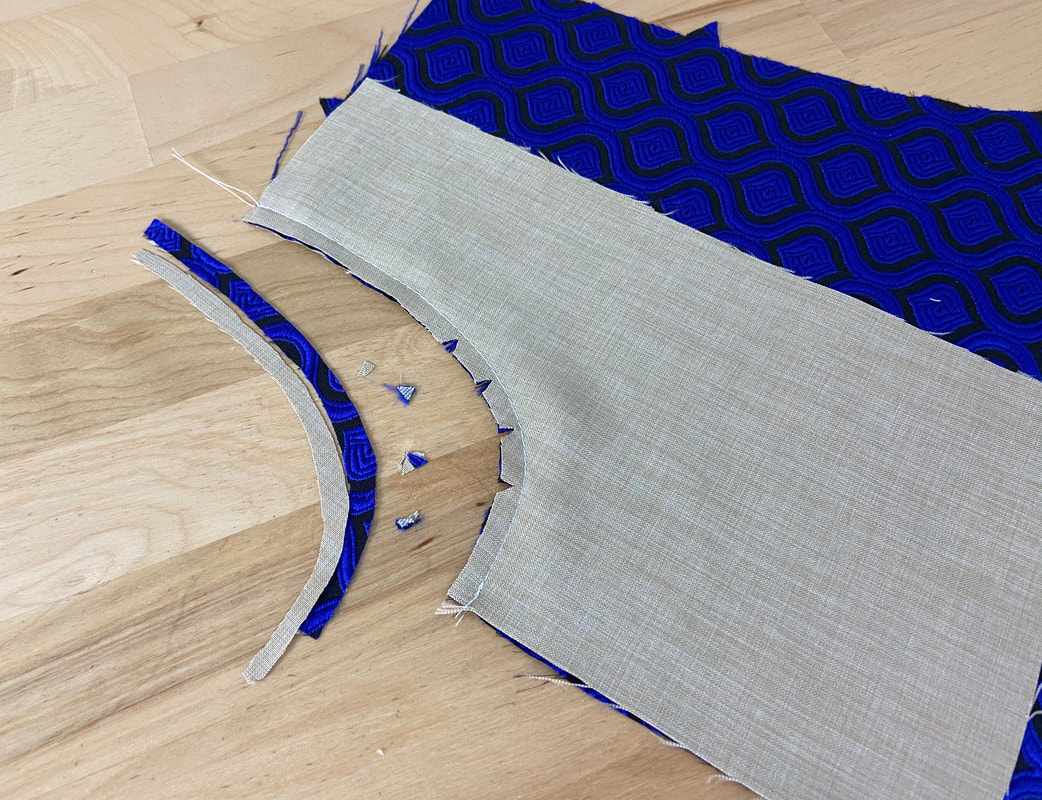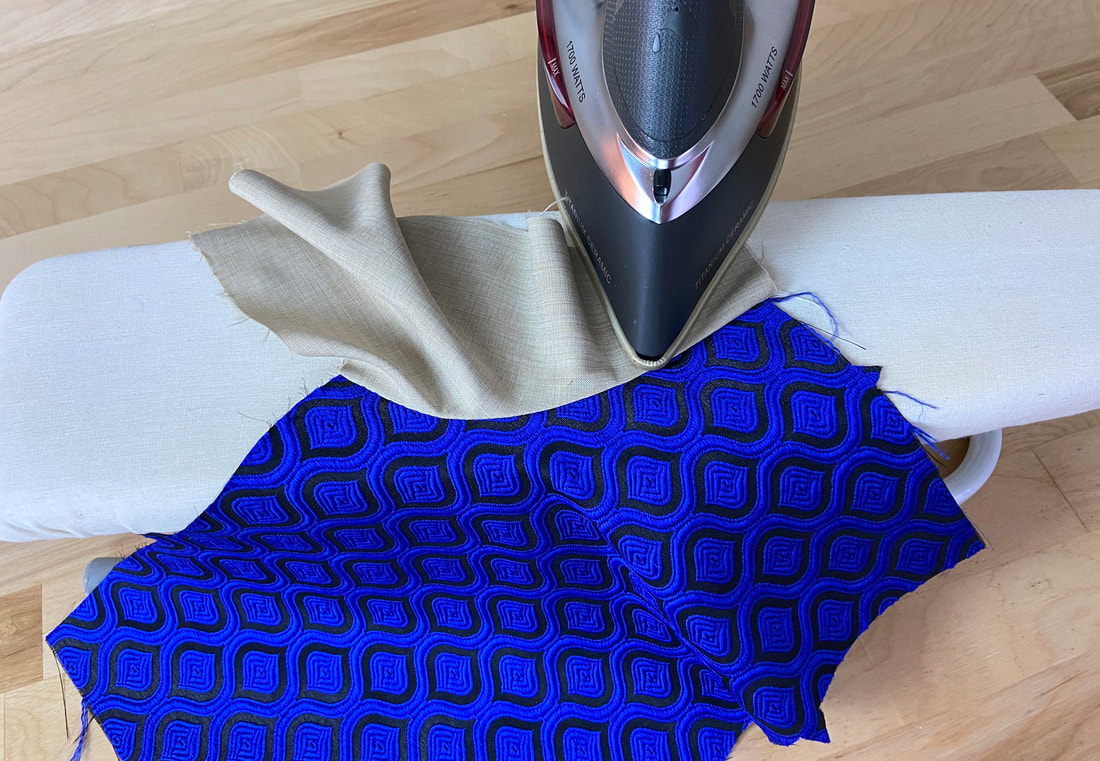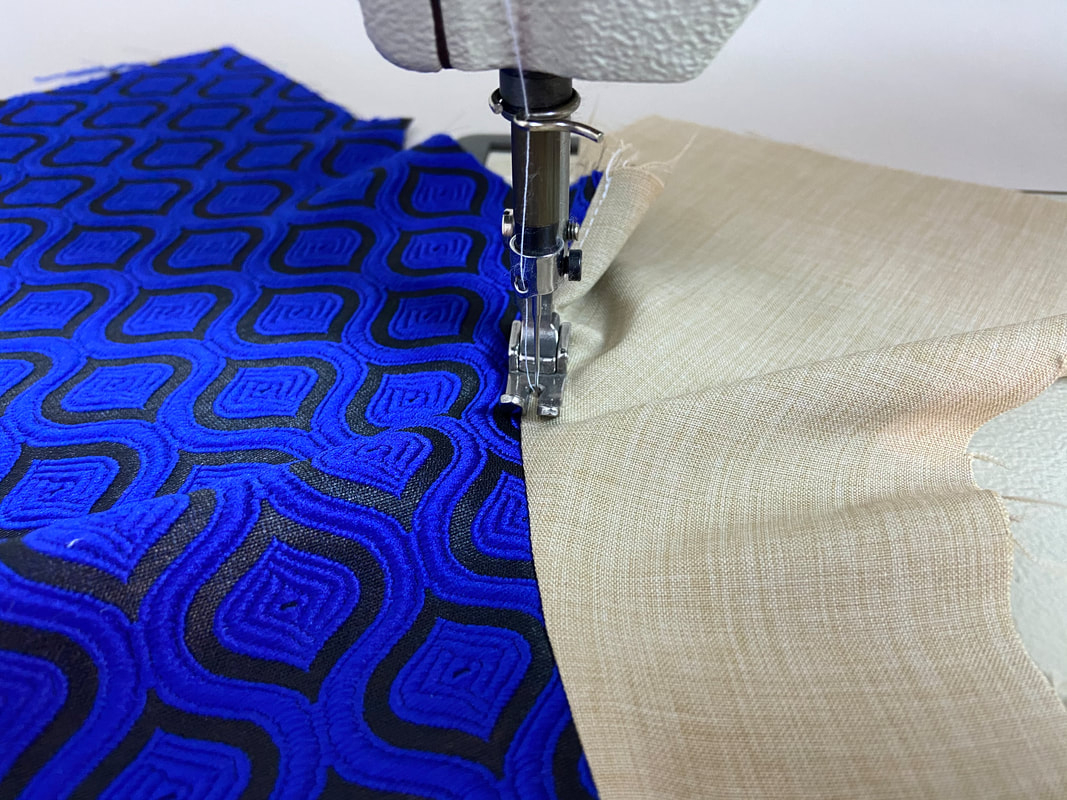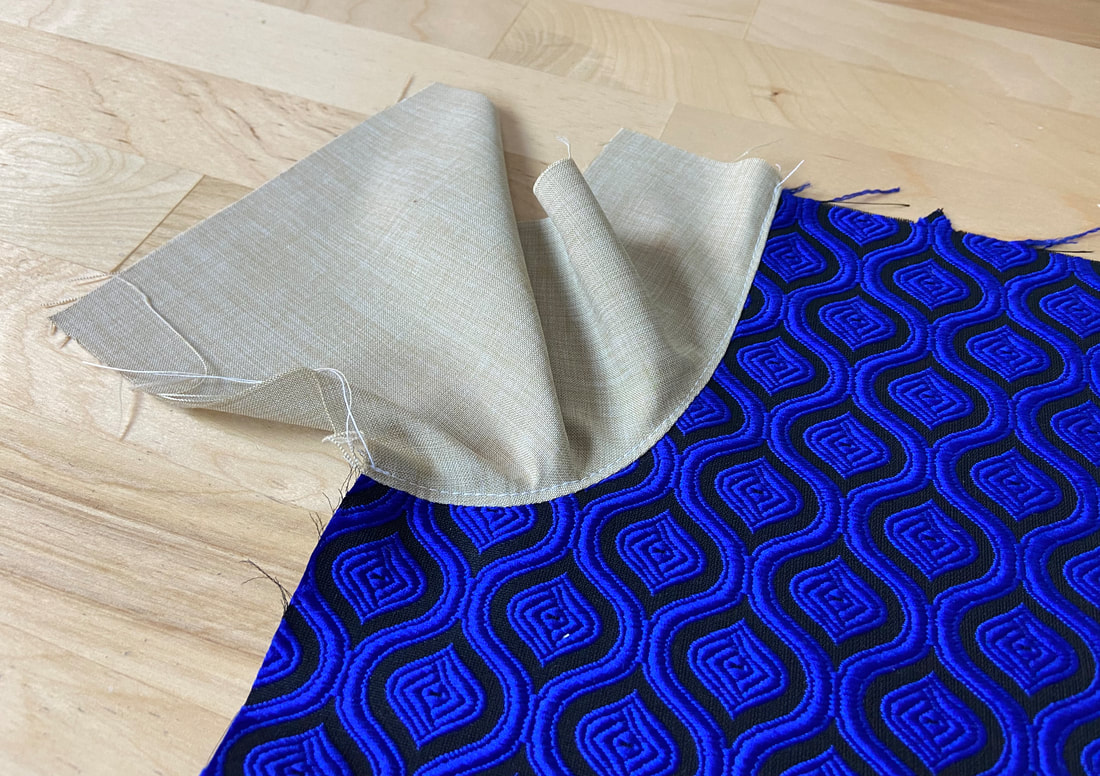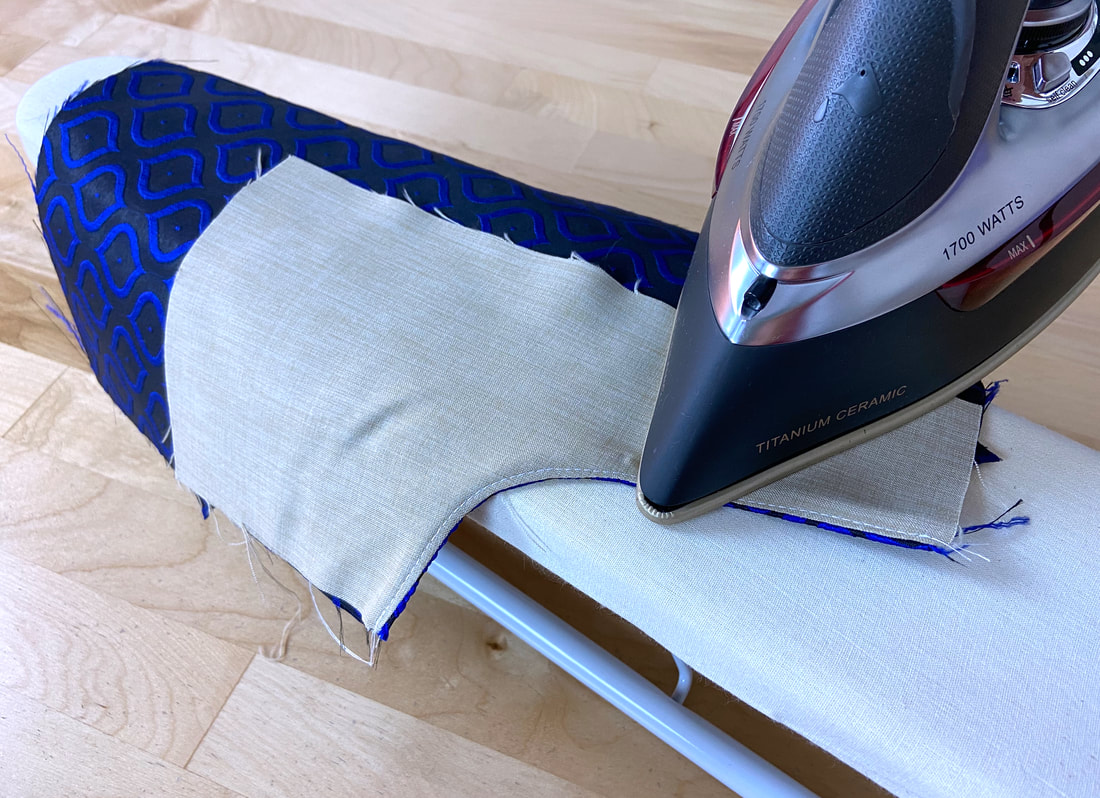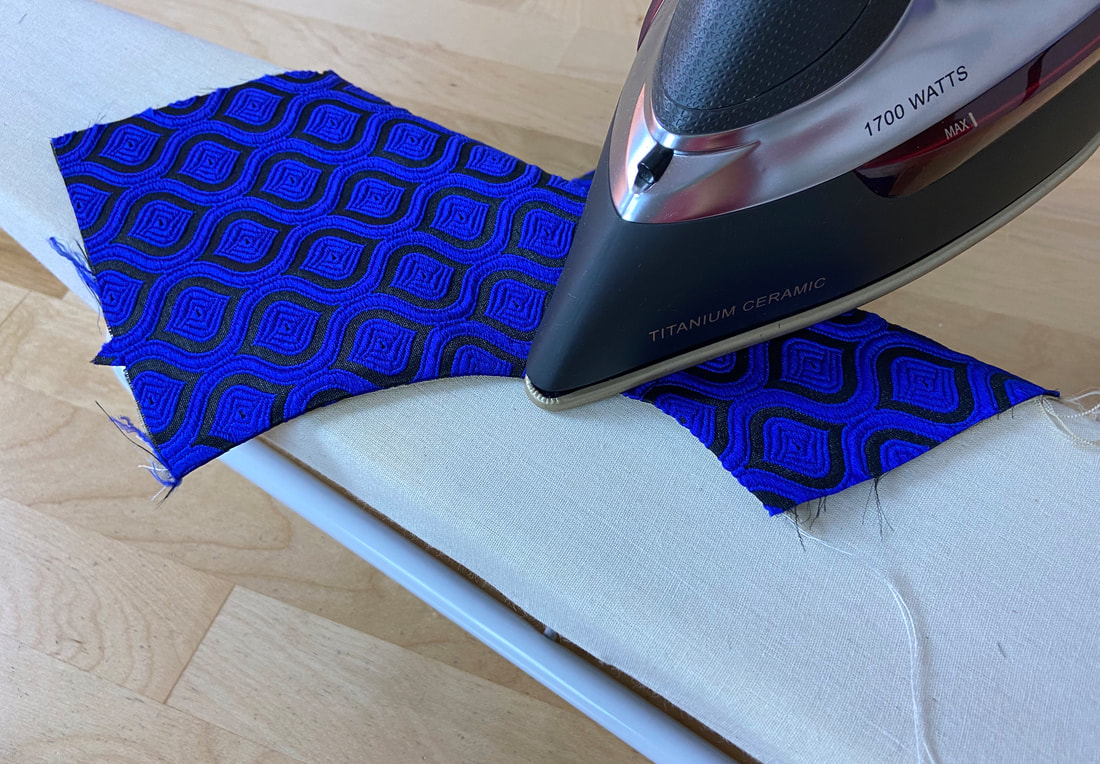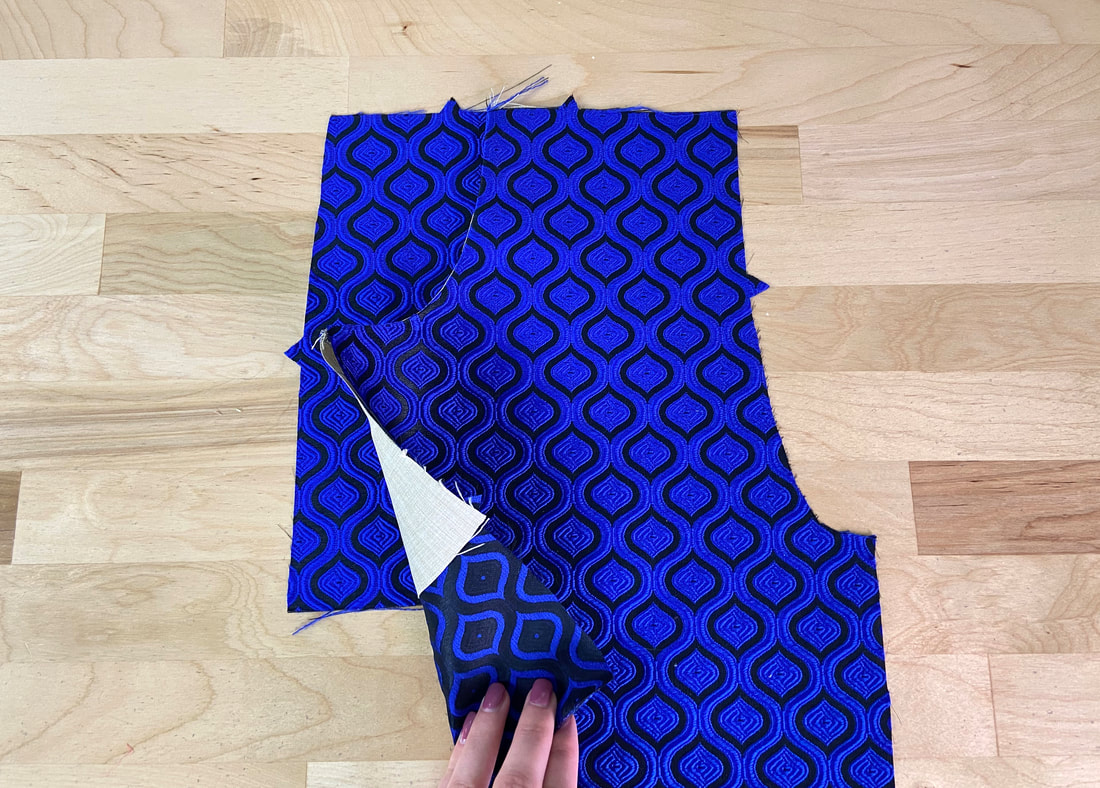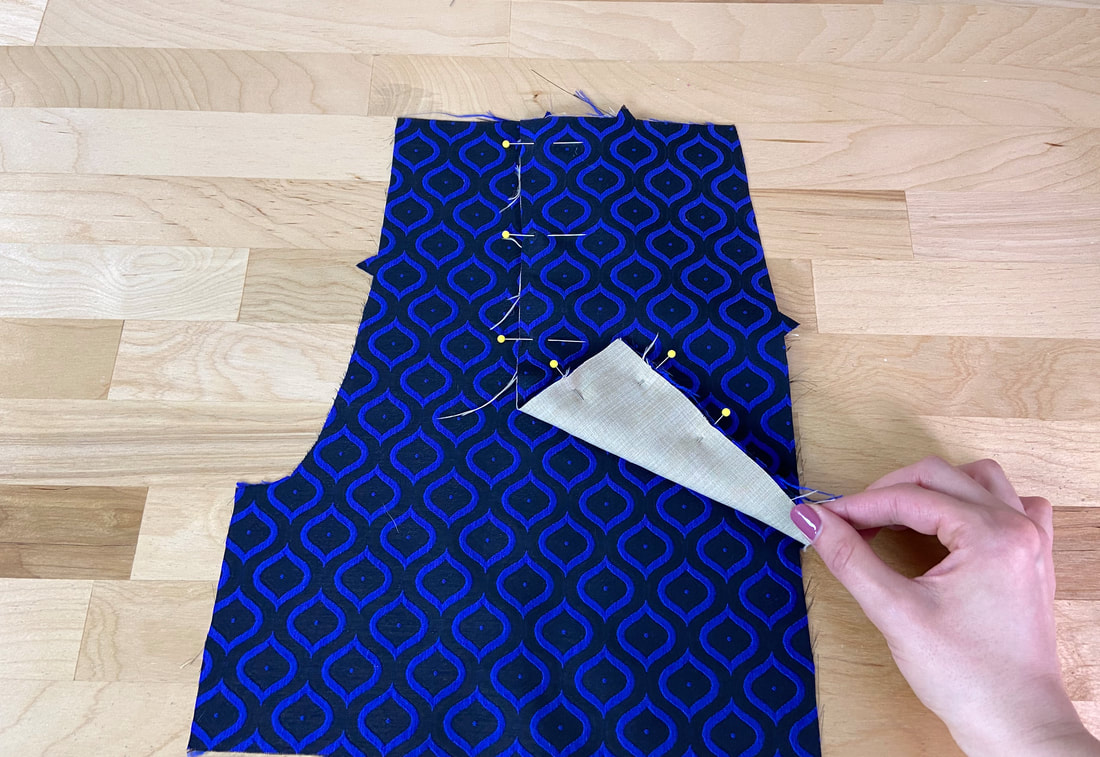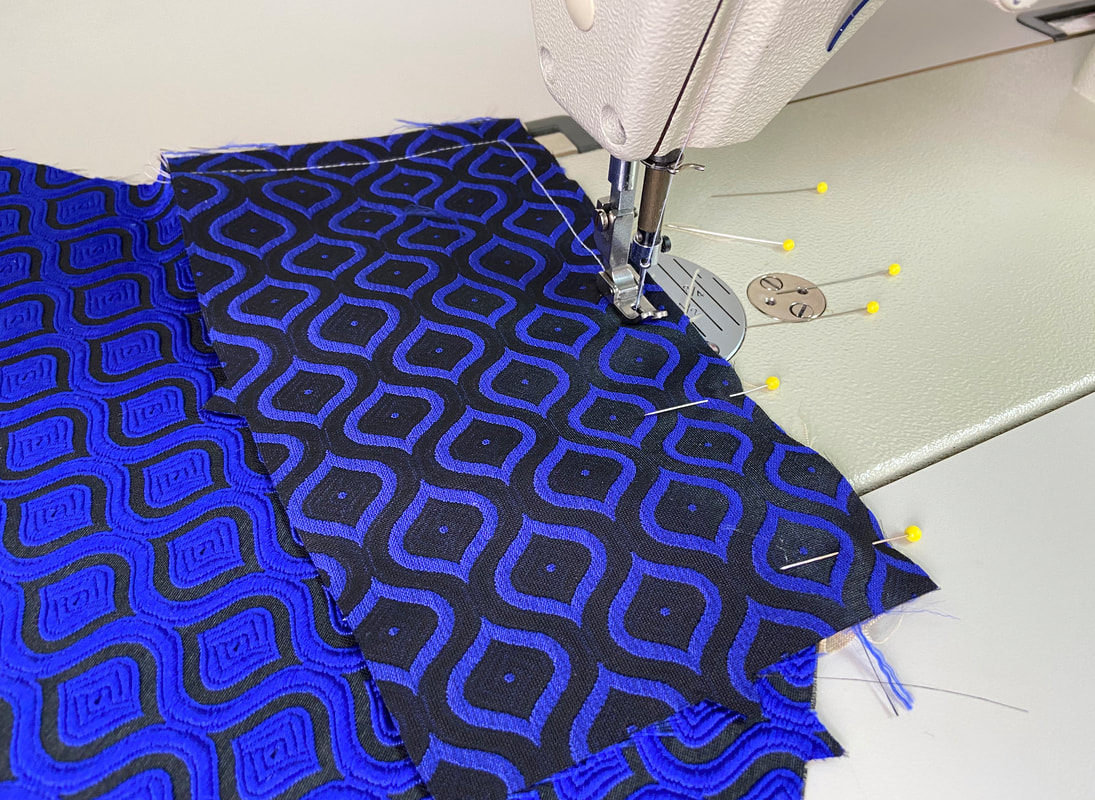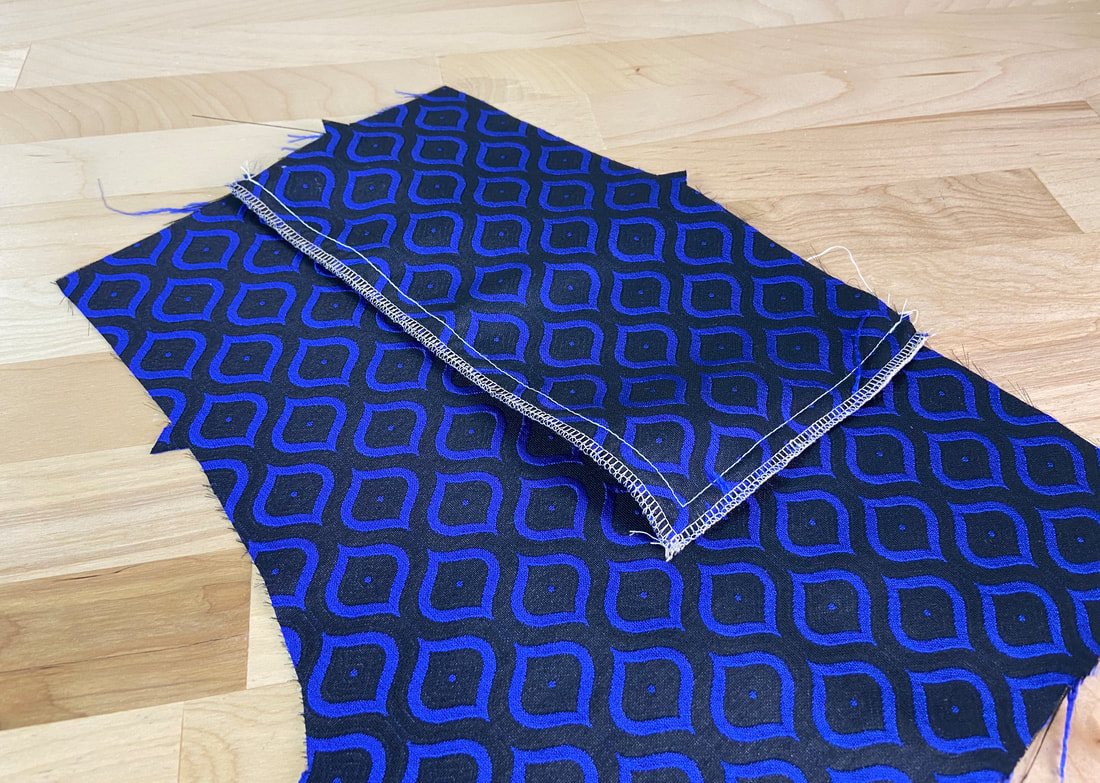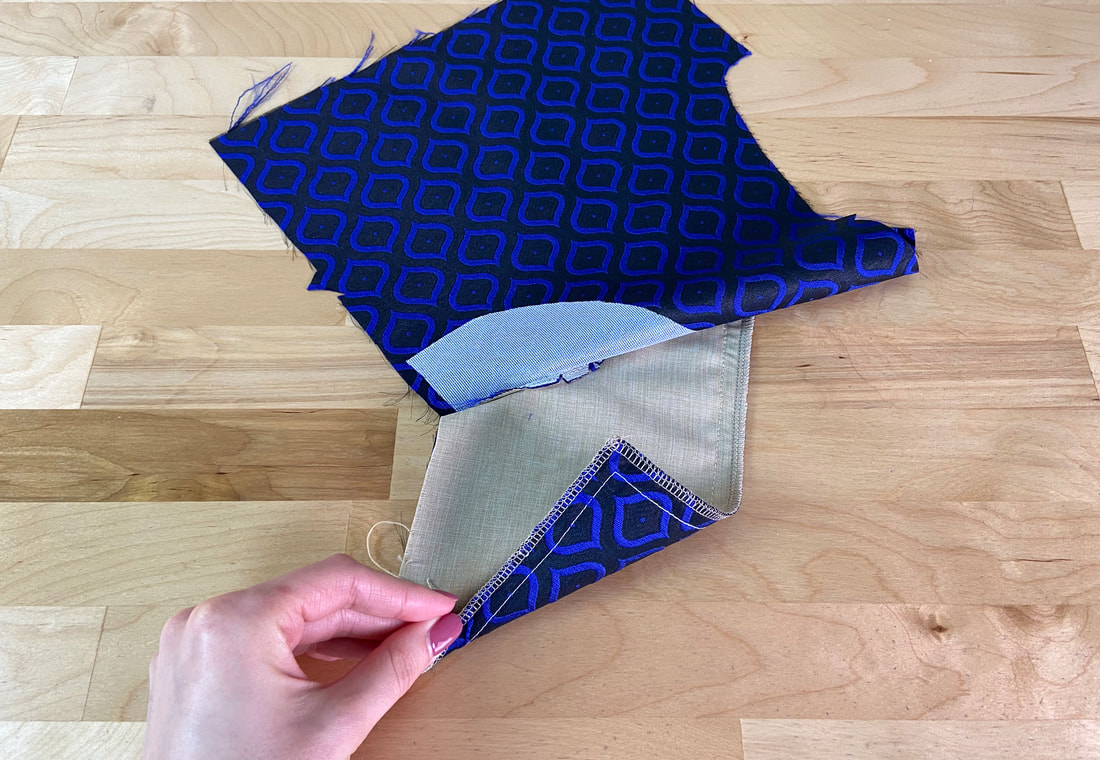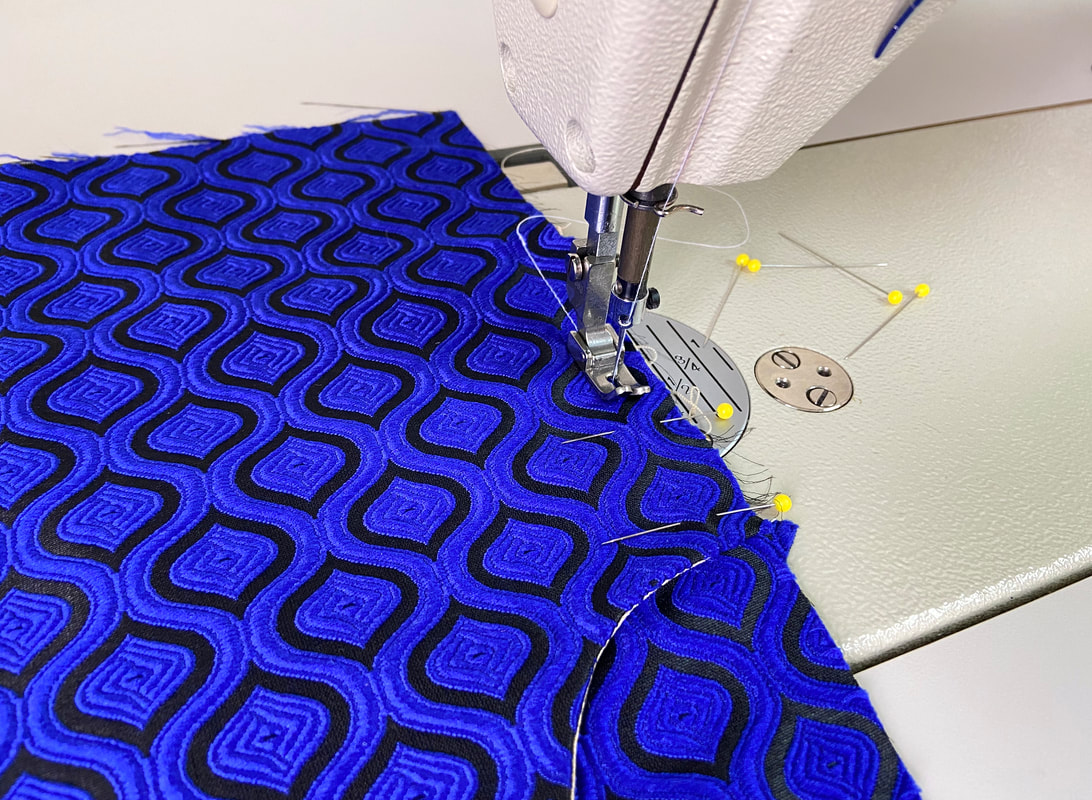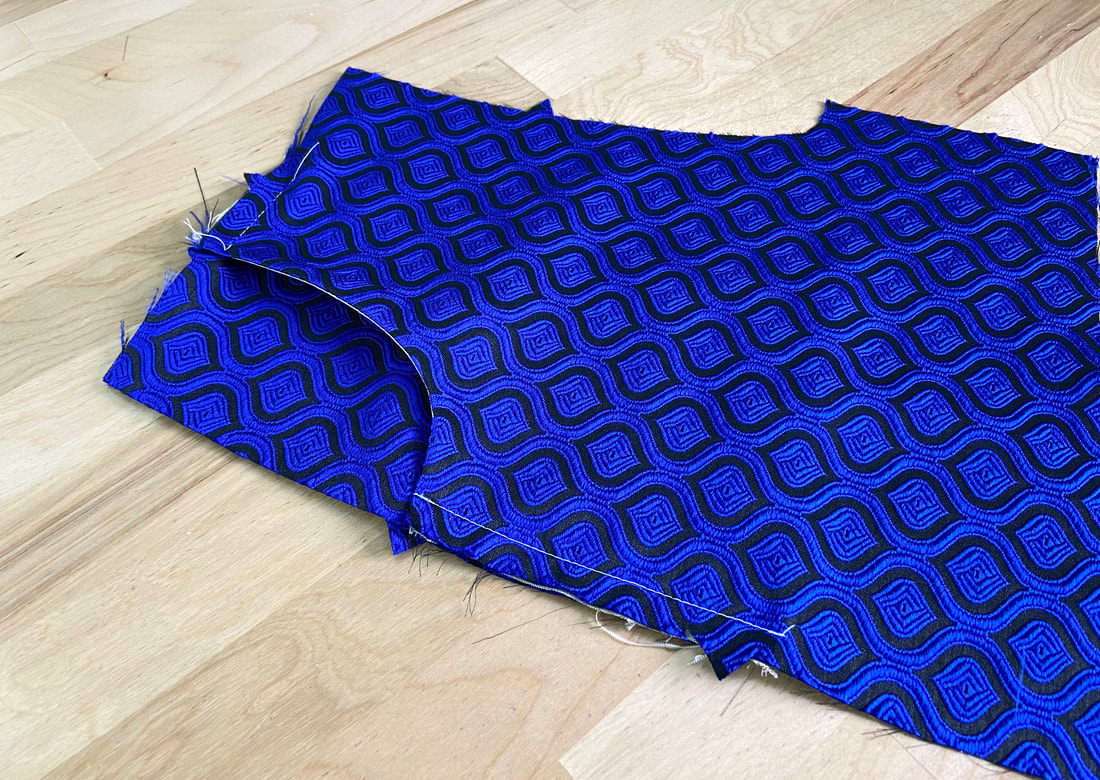Front hip pockets are conventionally added to bottoms or dresses/tunics that have a waistline seam. A waistline seam or edge serves as a base for the front hip pocket application.
The pocket opening extends from the waist down to a seam- usually the side seam. The basic pocket pieces needed for sewing a front-hip application include a facing and a pocket layer.
The facing is used to finish the top (usually curved) pocket opening edge.
The pocket piece connects to the garment at the waist and blends into the pocket bag as it moves to the inside of the pocket. The facing and pocket piece form the body of the pocket bag, while also finishing the pocket opening edges.
The facing portion can be divided in two parts: the portion that is sewn to the pocket opening edge is cut from the same fabric as the garment, while its bottom portion forms the pocket bag and is cut from a lighter fabric (usually lining). This is a common application with denim, shorts and tailored trousers.
The division of the facing in two pieces allows for the construction of a lighter pocket bag which in terms, minimizes bulk and promotes comfort. In the example below however, you’ll learn a simpler single-piece facing application.
As always, interfacing is important in securing the more vulnerable pocket edges. Since front hip pockets are considered a heavy duty style, they are used with denim and other durability-prone bottoms.
A good front hip pocket should withstand lots of strain, have good structure, and be highly functional, especially along its top opening edge. For that reason, the pocket is backed with interfacing to provide long term structure and durability.
The good news about sewing front hip pockets is that all pattern pieces are provided in your pattern set. You won’t have to do any measuring or pattern drafting (unless you choose to make your patterns from scratch!).
While your pocket patterns may look a little different or include additional pieces, the way the pocket itself is put together and the techniques used for finishing the pocket opening, is the same across the board. These basic steps are shown below.
Sewing A Front Hip Pocket With Curved Edge
1. Cut out the facing and pocket piece(s). You can use a different fabric for the facing but the pocket piece should be the seam as the garment. Remember the pocket piece incorporates into the waistline and is visible from the outside of the garment.
The pocket piece should have two distinct notches: One located along the waist edge and the other, on the side seam. These notches will provide important markers for aligning the facing to the pocket piece underneath.
2. Before putting the pocket pieces together, back the top front edge with interfacing. Use the front garment patterns or fabric pieces to cut interfacing portions that are about 1.5” in width. These interfacing pieces will reinforce the top edge of the pocket opening.
3. Fuse the interfacing to the wrong side of the front garment, aligning it to the curved edge of the pocket opening as shown.
4. Align the curved facing edge to the garment edge such that fabric face sides are touching. Insert pins perpendicular to the curved edges as shown.
5. Stitch the facing to the garment edge at the designated seam allowance. In this case, the seam allowance is ½”.
6. Trim the seam allowance down to ¼” and clip wedge notches along the most curved portion of the seam.
7. Extend the facing and seam allowances away from the garment, and iron the seam in this position. Be careful not to wrinkle the fabric in the process.
8. Understitch the facing edge and seam allowance underneath next to the seamline as shown.
This stitch will keep the pocket edge lying flat and prevent the facing from rolling to the outside of the pocket opening.
9. Bring the facing to the wrong side of the garment and iron the finished edge flat as shown.
10. Place the finished curved pocket edge on top of the pocket piece such that fabric right sides are touching.
The waistline notch should align with the top of the finished pocket edge. The notch located on the side of the pocket piece should align with the bottom (horizontal) pocket edge as shown.
11. Flip the pocket application on its wrong side and insert pins through the matching pocket and facing layers. Insert the pins perpendicular to the two edges.
12. Stitch the side and bottom edges to seal the pocket bag.
13. Apply an overedge stitch to the pocket bag seam allowance to enclose its raw edges.
14. To secure the pocket application at the top and side seam edges, insert pins through all waistline layers as shown.
Next, insert pins perpendicularly through all pocket layers at the side seam.
15. Machine stitch within the seam allowance to secure the layers.
These two stitches keep all edges properly aligned while the garment goes through the remaining construction process.

